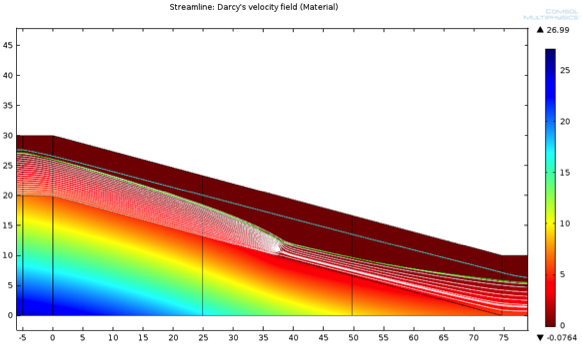Chemical Modification of Swellable Soils in Geotechnical Applications
2011 - 2014

Geotechnical Engineering is a mature field, and yet there are certain problems still to be resolved, e.g.:
- how to stabilize a creeping landslide without cutting trenches for drainage;
- how to prevent seasonal displacements of building foundations on a swelling soil without soil replacement;
- how to build pile foundations through hydraulic barriers without creating a preferential flow path for contaminants.
The only way to find new effective solutions to these old problems is to search outside of the narrow box of soil mechanics into other fields, in particular, chemistry, biology and clay mineralogy.
Our ultimate long term goal is to develop a fundamental understanding of interaction of clay minerals with a broader range of environmentally acceptable chemicals. The goal of the proposed research is to investigate effects of different composition of the water in the soil on physical and mechanical properties of clays with the aim of enhancing drainage and reducing the swelling potential, as well as assessing effects of corrosion on creating conduits for contaminant transport along steel pile foundations. Towards this goal, a staged approach with intermediate objectives from the small scale tests up to large field simulations will be adopted in the proposed research.
Starting from the results of basic investigation on the chemical level, tests of soil samples on laboratory scale will be performed to measure, how the chemically modified soil behaves. In order to describe the material behavior for all of the three geotechnical applications:
– soil permeability increase for landslide stabilization,
– soil swelling inhibition for reduction of foundation displacements,
– assessment of contaminant transport along corroding pile foundations,
mathematical models will be developed and calibrated with experimental results. Based on these models, computer simulations will be carried out to make prediction of larger experiments and field applications. Finally, the results are summarized by developing guidelines and recommendations for practical applications of the proposed mitigation techniques.

Additional Information Links/References
Funding
Swiss national science foundation SNF Project Funding Nr. 137689
Researchers
Dr. Michael Plötze
Pascal Minder
Publications
Contact
Institut für Geotechnik
Laura-Hezner-Weg 7
8093
Zürich
Switzerland